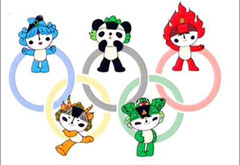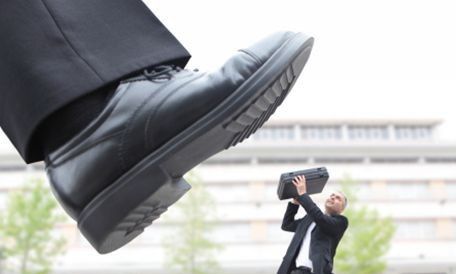“福娃”奥运史上象征意义最为丰富的吉祥物
|
What does Fuwa represent? 吉祥物的首次“现身”是在1972年慕尼黑奥运会上,此后吉祥物便成为历届奥运会的重要形象代表。奥运吉祥物以其富有活力的独特形象深入人心,体现了奥林匹克精神、传达当届奥运会的举办理念以及主办城市的历史文化和人文精神,明年的北京
Fuwa are probably the most meaningful Olympic mascots in the history. Actually, when designers design them, they put many symbolic meanings into these five mascots that represent traditional culture and natural characteristics of China, which might be very difficult for foreigners to understand. Basically, the name of the five Fuwa: "Beibei", "Jingjing", "Huanhuan", "Yingying" and "NIni" altogether in Chinese means welcome to Beijing. And they represent for five Olympic rings and also the five elements in Chinese philosophy. The five image of Fuwa come from the original shape of Chinese sturgeon, panda, Olympic flame, Tibetan antelope and swallow. Beibei, passing the wish of flourish and harvest, it represents the blue ring and aquatic sports. Jingjing is a lovely panda, it brings joy and happiness, Jingjing comes from the forest and symbolizes the harmonious coexistence between man and nature. It represents the black ring and strength sports. Huanhuan is the eldest in the five, and it symbolized the Olympic sports spirit and the passion people have towards the Olympic Games. It symbolizes the red ring and ball games. Yingying is an agile Tibetan antelope, it comes from the North-West of China and it is the rare and endangered species. Yingying represents the yellow ring and the athletics sports. Nini comes from the sky, it is a swallow, and its image comes from the Chinese traditional kite and it is the symbolic image of Beijing. It represents the green ring and gymnastic sports. Although Fuwa's meanings are various and hard for foreigners to understand, it is the feature of splendid Chinese culture and they give the information to the world--Welcome to Beijing! |

 奥运会吉祥物“福娃”恐怕是奥运史上象征意义最为丰富的了,那么你知道它们都代表怎样的含义吗?
奥运会吉祥物“福娃”恐怕是奥运史上象征意义最为丰富的了,那么你知道它们都代表怎样的含义吗? 







